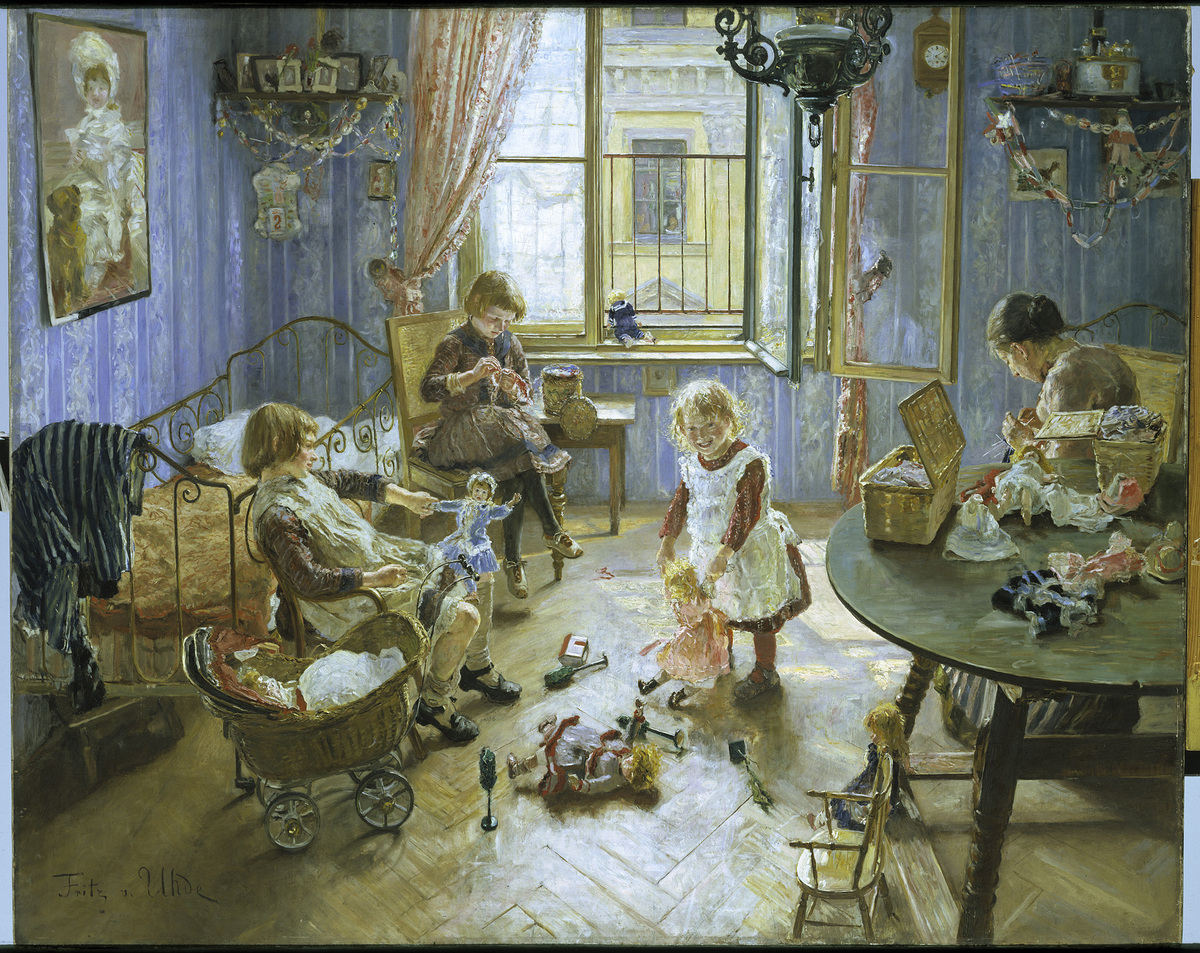Abstract
The cult of a childhood unblemished by work and family conflict was
fostered by writers and artists before, during, and after the
Bismarckian era. Here, artist Fritz von Uhde (1848–1911), known
primarily for his Naturalist renderings of religious subjects, offers a
view into a lively, colorful children’s nursery, where three young girls
play and knit, supervised by their mother. In terms of both subject and
treatment, this painting differs from many of Uhde’s other works.
Captured in a joyful palette of pinks, purples, and yellows, this
contemporary interior is illuminated by the dazzling sunlight that
floods the canvas. The exaggeratedly elevated, oblique perspective
brings the promise of unobtrusiveness, inviting the viewer to glimpse
into the children’s world, unbeknownst to them. In various respects,
Children’s Nursery reflects the
preoccupation of Germany’s younger painters with everyday life in the
city, as well as their corresponding decision to break with the darker,
stiffer paintings of the “old” academy. In this enterprise, which
combined the styles of naturalism and Impressionism, Uhde was joined by
Max Liebermann, with whom he had close contact.
